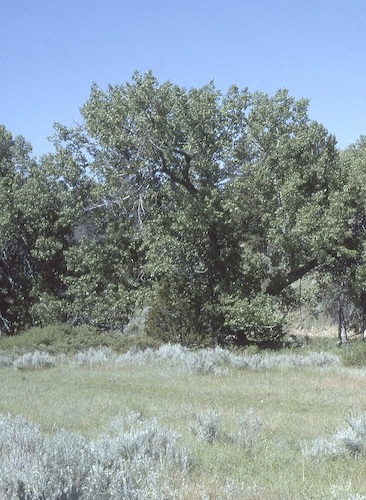The Chronicles Of Grant County
 Ash tree growing in Montana. (The photograph was provided courtesy of the United States Department of Agriculture.)
Ash tree growing in Montana. (The photograph was provided courtesy of the United States Department of Agriculture.)
Ash Street in Lordsburg was named after the Ash tree. Other roadways are also named after the Ash tree in southwest New Mexico.
Species of this tree are found growing in a majority of states within the country, including in New Mexico.
According to a report dated March 27, 2023, from the United States Department of Agriculture (USDA), Ash trees are found in a number of counties in southwest New Mexico and in southeast and central Arizona. This is especially the case in area within the Gila National Forest and beyond.
Trees Worth Knowing, a book written by Julia Ellen Rogers and published in 1917, noted that "Ash trees are usually large and stately when full grown, with trunks clothed in smooth bark, checked into small, often diamond-shaped plates. This gives the trees a trim, handsome appearance in the winter woods. As shade trees, Ashes are very desirable, and they are valuable for their timber."
"The near relatives of Ashes surprise us," the book noted. "They belong to the Olive family, whose type is the Olive tree of the Mediterranean region, now extensively cultivated in California for its fruit. Privets, Lilacs, and Forsythias, favorites in the gardens of all countries that have temperate climates, are cousins to the Ash tree. One of its most charming relatives is the little fringe tree of our own woods. Thirty species of Ash are known; half of that number inhabit North America."
More than 80 years after her book was published, many of the types of Ash trees she detailed started to come under attack by a pest, Emerald Ash Borer, in much of the nation.
The USDA report from March of 2023 indicated that there were no Emerald Ash Borers observed in this area at that time.
"The Emerald Ash Borer (Agrilus planipennis) is a destructive wood-boring pest of Ash trees (Fraxinus spp.)," noted the USDA in a report dated August 14, 2023. "Native to China, Mongolia, North Korea, South Korea, Japan, Taiwan, and the Russian Far East, the Emerald Ash Borer beetle (EAB) was unknown in North America until its discovery in southeast Michigan in 2002. Today, EAB infestations have been detected in 36 states and the District of Columbia."
A brochure issued by the USDA indicated that "in North America, EAB is known to infest all species of Ash (Fraxinus spp.). Ash can be recognized by the presence of compound leaves which are arranged opposite of one another on the branches."
"Eggs are laid between layers of bark and in bark crevices," the brochure detailed. "Larvae hatch in about one week and bore into the tree where they feed on the inner bark and phloem, creating 'S'-shaped galleries. Larvae go through four feeding stages, and then excavate a pupal chamber in the fall, where they will overwinter as prepupae. Pupation occurs in late spring, and adults begin to emerge through 'D'-shaped exit holes in May and early June. Adults will remain active until the end of summer."
It may not always be obvious that the Emerald Ash Borer is present in an Ash tree.
"New infestations are difficult to detect, as damage to the tree may not be apparent for up to three years," according to the USDA brochure. "Symptoms of an infestation can include branch dieback in the upper crown, excessive epicormic branching on the tree trunk, and vertical bark splits. Woodpecker damage is sometimes apparent."
One of the largest Ash trees in America's Southwest is in southern Arizona, according to a brochure issued by the Arizona Department of Forestry and Fire Management in January of 2020. That Department cited a Velvet Ash tree as one of that State's Champion Trees. This specific tree was growing in Santa Cruz County and was 16 feet in girth at that time.
Do you have questions about communities in Grant County?
A street name? A building?
Your questions may be used in a future news column.
Contact Richard McDonough at
If your email does not go through, please contact
© 2024 Richard McDonough











